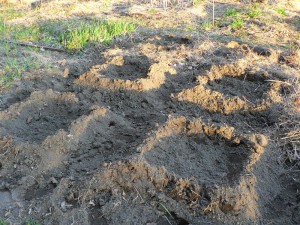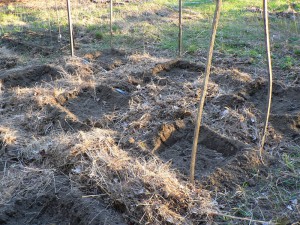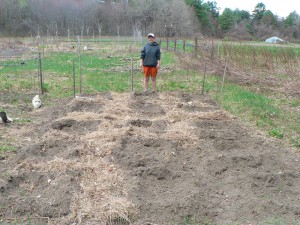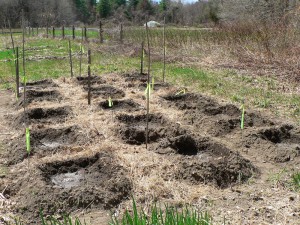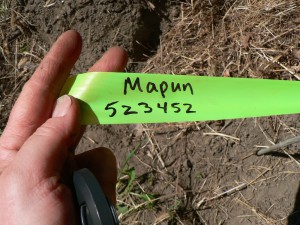I have been meaning to write about my absolutely fabulous, spectacularly exciting flax project for weeks now, but life has been busy. The more excited I am about something, the less succinct I am capable of being. This will be a long story, so sit back, and welcome to the first post about it!
As you may know, I am in a flax and linen study group, which started meeting a little over three years ago. I love this group of folks–amazing, passionate people–and I love being part of it. Recently, we donned the official name “New England Flax and Linen Study Group” in preparation for an event we are planning for August 20-21, 2016. We are organizing a symposium entitled “Flax and Linen: Following the Thread from Past to Present” which will be co-sponsored with and hosted by Historic Deerfield. In the coming days, weeks, and months I will post much more information about it, but meanwhile put it on your calendar!
We conceived of the idea for the symposium in August of 2014. At the very same time, we conceived of the absolutely fabulous, spectacularly exciting fiber flax project that is the subject of this particular post.
Here’s a teensy bit of background. Fiber flax is specifically bred to produce fine, long fibers from the stem, which can be spun into linen yarns and woven into linen cloth. It grows tall with minimum branching, and doesn’t set a spectacular quantity of seed. The Latin name for the species is Linum usitatissimum. In contrast, the main job of oil seed flax, the type one might eat, is to produce as many oily seeds as possible. So, it is shorter, branches a lot, and produces a lot of seed pods. Oil seed flax is the same species as fiber flax, but does not necessarily produce good quality fiber for yarn or cloth.
There are not a lot of different varieties of fiber flax seed available to the small-scale grower in the U.S., and even fewer are domestically produced or untreated. This is a source of frustration for folks like me who would like to grow local, organic, high quality fiber flax.
The fiber flax cultivars that are currently available are lovely as far as they go (for example, the Marylin I’ve been growing is willowy and tall, has high germination rates, and is not susceptible to disease). But when one considers the mind-bogglingly fine linen threads that went into antique and ancient textiles and laces, one has to wonder what glories we have lost, and what treasures might lurk in the less popular commercial varieties and/or extant historical varieties.
Dozens, probably hundreds, of fiber flax varieties have been developed worldwide. For centuries–millennia, even–flax was the preeminent fiber of Europe and western Asia. Many varieties have been lost to the ravages of time. As far as I know, fiber flax does not enjoy anything like the “heritage” or “heirloom” status among seed savers that other plants of economic importance enjoy. Nevertheless, many varieties have been preserved in seed banks around the world. The USDA germplasm system preserves a large number of fiber flax varieties. Carolyn (fabulous lace-maker and botanist, among other things) in our flax and linen study group informed us of the existence of the germplasm system last summer, and offered to request a bunch for us to grow.
When deciding which ones to request, Carolyn prioritized qualities such as height and disease resistance. She ended up ordering 30 varieties. Back in April we received 30 little packages of seeds. A treasure trove. Each came with 200 seeds, and information describing various traits such as height, time to flowering and maturity, disease resistance, flower color, etc.
Long story short, I am growing 14 varieties from the USDA at our community garden plot at Amethyst Brook and 11 varieties across the street at Amethyst Farm, courtesy of the Brennans. I am also growing three varieties that I acquired through the Seed Savers Exchange. This makes a grand total of 15 at the community gardens, 12 at Amethyst Farm, and one type in the garden of my friends Liz and John in South Deerfield. There is a very interesting reason for this, which I will explain in the next post.
The plan is to grow out these little plots to increase seed this season. Ironically, I planted less densely than I normally would for fiber, to allow for branching and greater seed production. Next spring we will hopefully have a larger quantity of seed, and will select some promising candidates to grow to evaluate fiber quality.
Here are some photos of the little test plots at Amethyst Brook, which I built over April vacation. Each little plot is approximately 3 square feet (21 by 20 inches).
After building them I mulched between the little beds.
Here I am part way through mulching.
And here’s what it looked like after it was all planted and watered on Saturday May 2nd. The flagging tape describes the acquisition number from the germplasm system as well as a more common name or shorter identification number for each one.
Here’s a close up of label.
In the next post I will explain my study design a little more, including what I learned over April vacation about preventing cross-pollination in flax and why I have a plot in South Deerfield. I will also post photos from my other test site at Amethyst Farm.
Exciting, right?!

